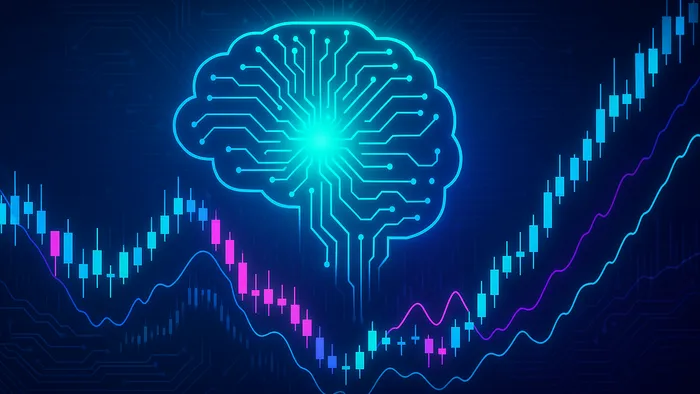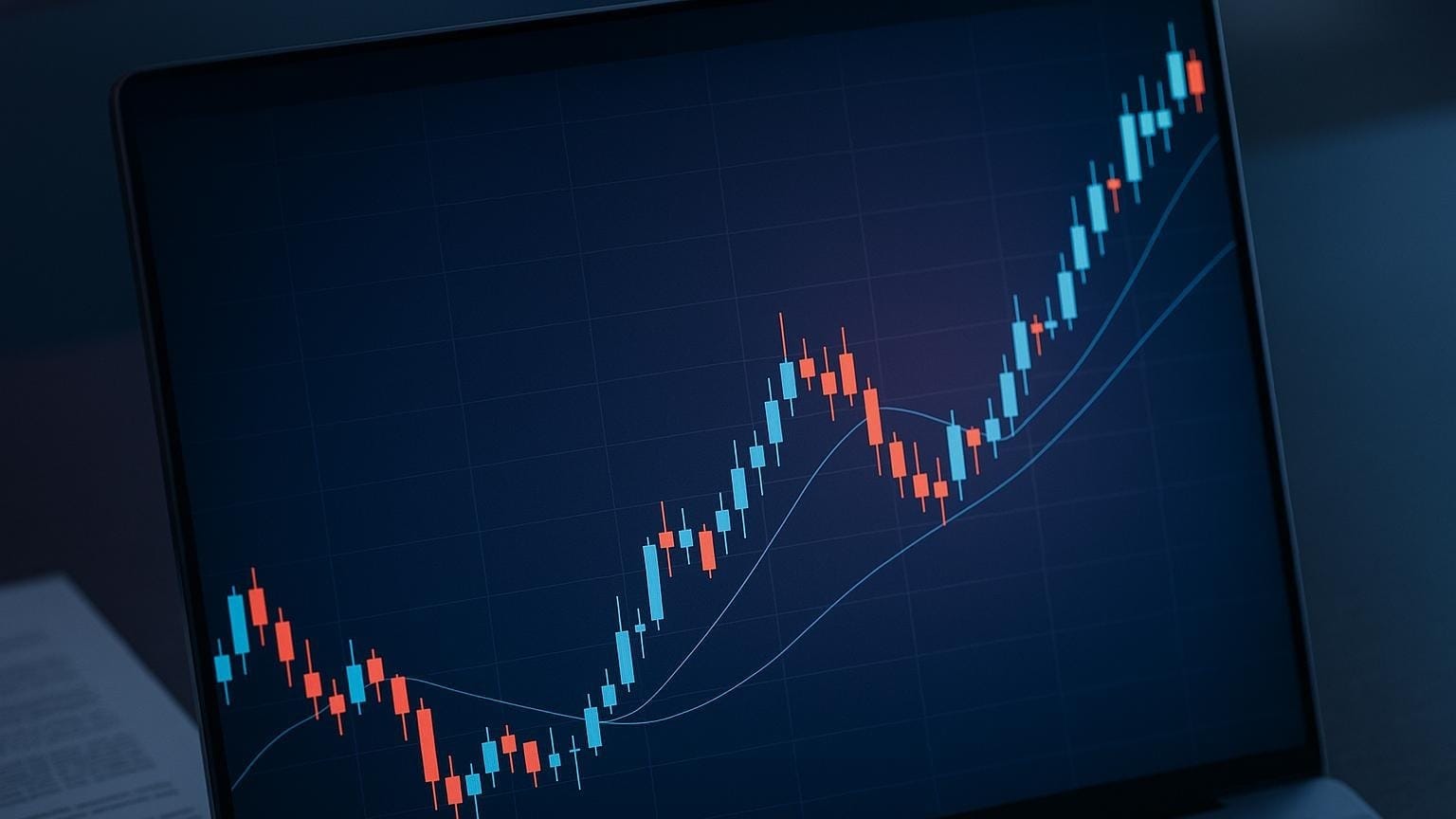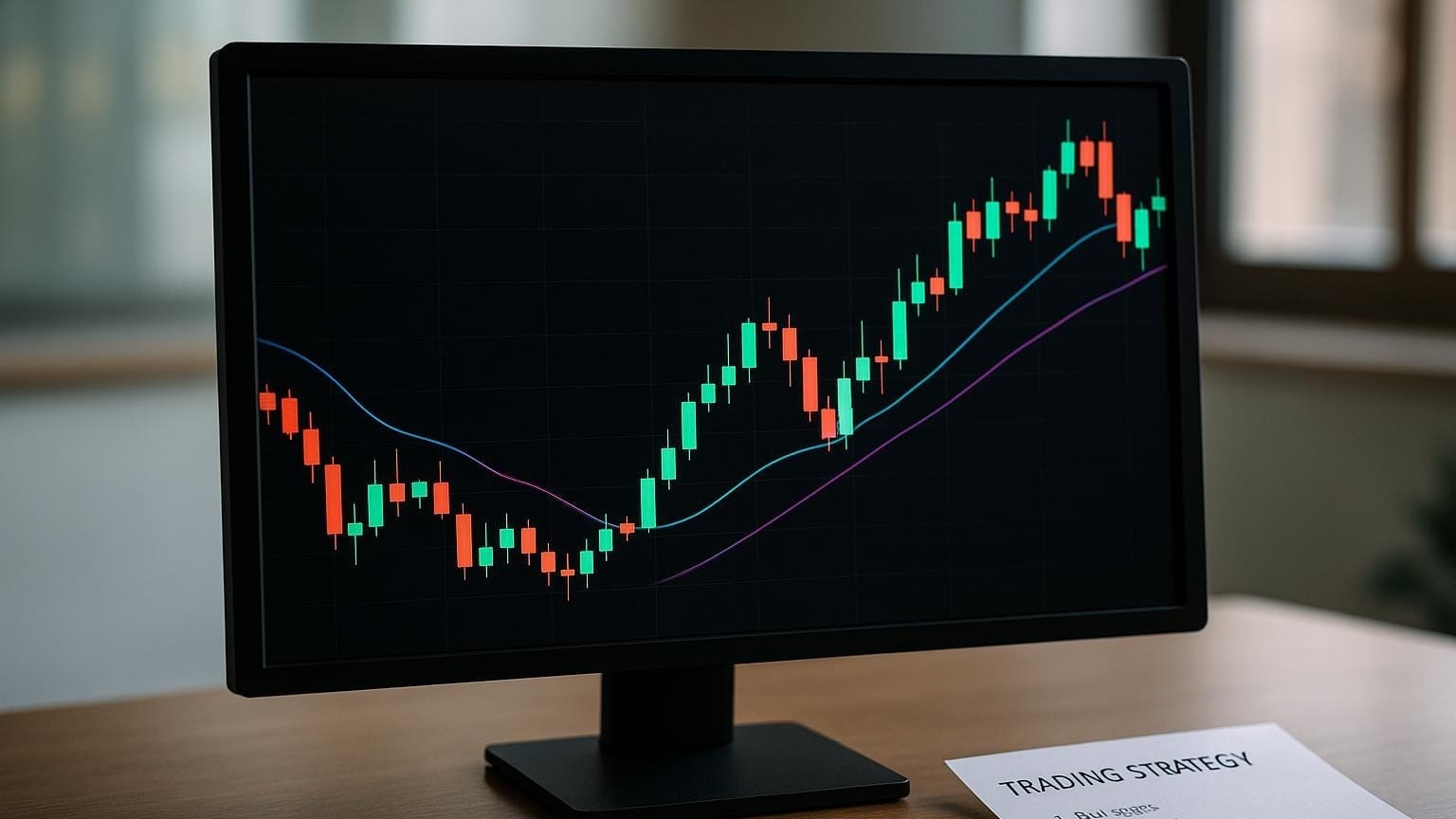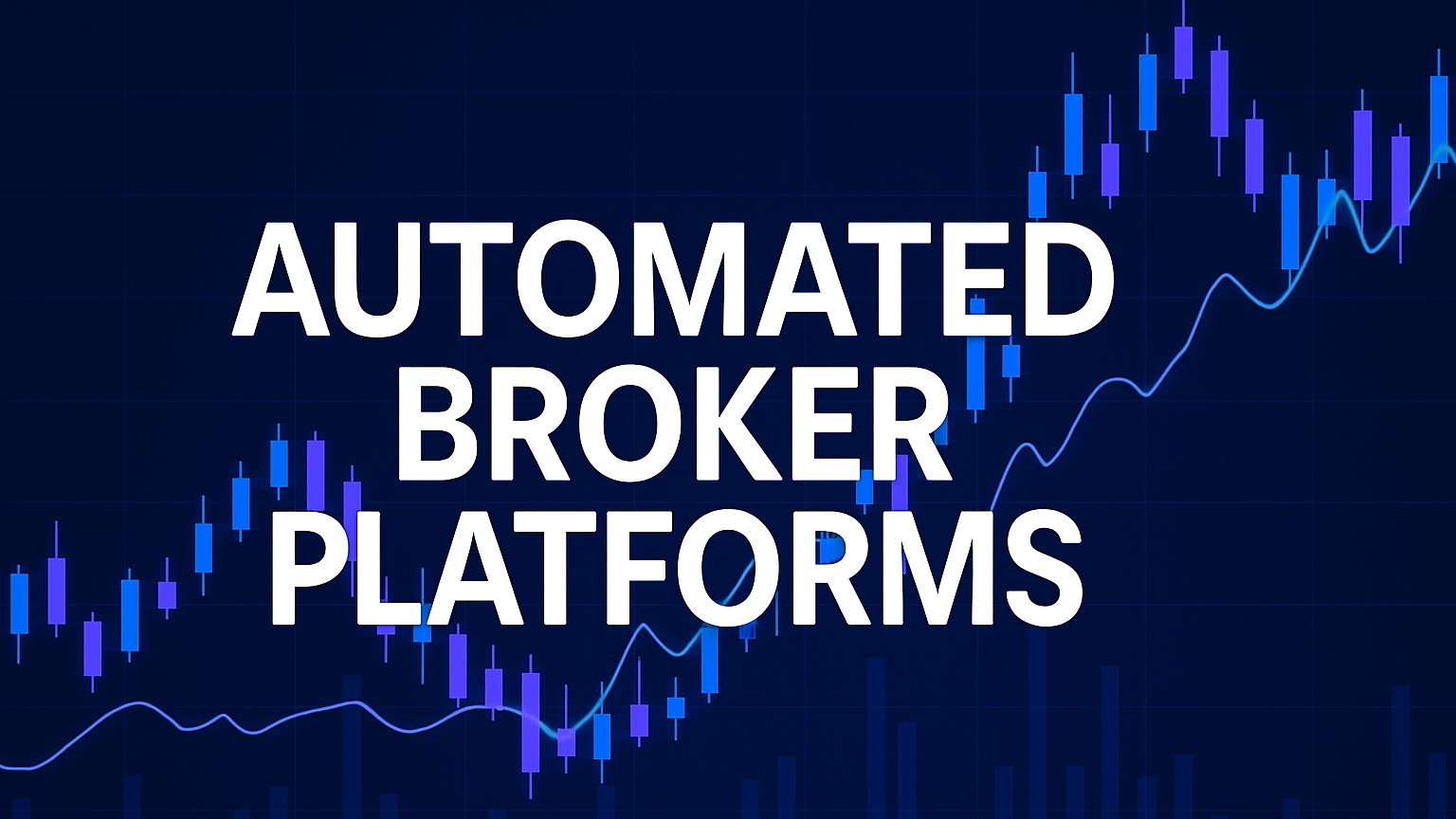Explore how AI, machine learning, and big data are revolutionizing algorithmic trading, optimizing strategies, and enhancing market insights.
Algorithmic trading is reshaping global financial markets, driven by AI, machine learning, and high-frequency trading. Here's what you need to know:
- AI & Machine Learning: Tools like deep learning and NLP improve market predictions and sentiment analysis.
- Data Insights: Big data and alternative sources (e.g., satellite imagery, social media) are enhancing decision-making.
- High-Frequency Trading (HFT): Speed-focused tech like FPGAs and quantum computing is cutting latency and optimizing trades.
- Risk & Compliance: Advanced systems manage risks, detect fraud, and ensure regulatory compliance.
Key Stat: By 2024, algorithmic trading is projected to reach $19 billion, up $4 billion from today.
This evolution is transforming how trades are executed, analyzed, and optimized. Read on to explore the tech and trends shaping the future of trading.
How AI Predicts Market Trends: A Deep Dive into Algorithmic Trading
AI and Machine Learning Systems
AI and machine learning are reshaping algorithmic trading by offering advanced tools for data analysis and automated decision-making. These technologies provide traders with sharper insights into market data and trends.
Pattern Detection Through Deep Learning
Deep learning models can uncover market patterns that traditional algorithms often overlook, delivering highly accurate forecasts for market movements. Here's a breakdown of their applications:
| Deep Learning Model | Performance Metric | Use Case |
|---|---|---|
| LSTM-based | 91.5 % accuracy | Stock price forecasting |
| Sequence-to-sequence | 85 % accuracy | Market trend prediction |
| CNN-based | +5 to 10 % accuracy | Price change prediction |
| Deep reinforcement | 92 % precision | Trading strategy optimization |
These results are supported by recent studies.
Companies like BlackRock are leveraging these technologies to analyze real-time market data. By examining historical trading volumes and order book dynamics, their AI tools can predict short-term liquidity opportunities, helping to improve trade timing and pricing.
Market Sentiment Analysis
Natural Language Processing (NLP) has transformed how trading systems interpret market sentiment. For instance:
- MarketPsych uses AI to quantify emotions and themes from financial news, generating actionable sentiment scores that help predict price changes.
- Bloomberg News Analytics evaluates financial news in real time, assessing potential market impacts before major price shifts occur.
These tools enable traders to act quickly on sentiment-driven insights.
Self-Learning Trading Systems
Reinforcement learning is at the forefront of self-learning trading systems. One example is Tech Trader, which has been operating autonomously since December 2012, managing live capital without human input.
Leading institutions like Goldman Sachs, JPMorgan, Two Sigma, and DE Shaw employ reinforcement learning to simulate market scenarios, fine-tune trading parameters, and optimize returns in real time.
"AI algorithms are designed to consume and process colossal volumes of financial data, including market trends, news updates, and economic indicators, with speed and accuracy."
(Ben Clay, Freelance content writer and strategist at Blueberry)
These AI systems are advancing trading strategies and improving market data analysis, providing a clearer path to uncovering deeper market insights.
Data Analysis and Market Insights
Data analysis and real-time insights are reshaping algorithmic trading. Today, machine-driven trading powered by big data represents about 55 % of U.S. equity market trading volume and 80 % of foreign exchange futures trading volume.
Live Market Data Systems
Modern trading platforms now feature tools like heatmaps, zoomable interfaces, and augmented reality to help traders quickly identify opportunities.
For example, LuxAlgo's Oscillator Matrix toolkit provides real-time insights into divergence and money flow. Their AI Backtesting Assistant allows traders to create and test strategies across multiple timeframes simultaneously.
| Data Processing Capability | Market Impact | Implementation |
|---|---|---|
| Real-time analysis | Faster trade execution | High-frequency trading systems |
| Pattern recognition | Identifying market trends | Machine learning algorithms |
| Risk assessment | Optimizing portfolios | Automated compliance checks |
New Data Sources for Trading
While live market systems focus on current data, alternative sources are offering new ways to understand trends. The alternative data market is projected to grow at an annual rate of 50.6 % from 2024 to 2030. Hedge funds and institutional investors are increasingly tapping into unconventional data sources:
- Satellite Imagery: Firms like Two Sigma and Citadel use satellite data to analyze industries such as energy, agriculture, and retail.
- Social Media Analysis: Sentiment analysis on platforms like X (formerly Twitter) has been shown to predict market movements with 87 % accuracy up to six days in advance.
- Corporate Activity Tracking: By monitoring corporate jet movements, investors can anticipate major decisions, as seen in the Berkshire Hathaway–Occidental Petroleum case.
"Banks are powering their scoring models with social networking, payments, search history, and other client behavioral data. Big data systems have evolved from being simply passive supplementary technology, once used to provide more accurate targeted information, and have become the deep learning mechanisms we see today, capable of making decisions and taking actions."
(Evgeny Kuznetsov, Director of Product Management, Market Data at Devexperts)
Market Movement Forecasting
Combining real-time data with alternative sources, advanced forecasting systems are improving decision-making. Renaissance Technologies' Medallion fund is a prime example, achieving average annual returns of over 70 % (before taxes) by analyzing vast amounts of market data.
Today’s forecasting systems bring together traditional metrics, alternative data, machine learning, and real-time sentiment analysis. Natural Language Processing (NLP) has further enhanced the ability to interpret financial news and social media sentiment, offering deeper insights into market trends.
High-Frequency Trading Technology
High-frequency trading continues to evolve as firms chase microsecond advantages. Currently, HFT makes up about 50 % of U.S. stock trading volume, with 60 % of global trading activity centered in data hubs located in the New Jersey Triangle and Chicago. This relentless pursuit of speed has led to major investments in hardware, networking, and even quantum technology.
Speed-Focused Infrastructure
HFT relies on cutting-edge infrastructure designed to minimize latency. Here's a breakdown of key components:
| Component | Purpose | Performance Impact |
|---|---|---|
| FPGAs | Custom hardware processing | Balances cost and development efficiency |
| Overclocked servers | Faster processing capabilities | Reduces computation time |
| Low-latency switches | Optimized data flow | Cuts down processing delays |
| Specialized NICs | Network optimization | Enhances data handling speed |
One notable example of speed-focused investment is Spread Networks' $300 million project in 2010. They built a direct fiber-optic link between the Chicago Mercantile Exchange and a Carteret, NJ data center, cutting latency by 1 millisecond. Early adopters paid $10.6 million for five-year contracts to use the system.
"HFT is using the fastest computers and networking equipment in a distributed manner to buy and sell anything really fast. It doesn't just have to be equity markets or futures markets like crypto. Generally speaking, it's a way to arbitrage markets."
- Dave Lauer, High-Frequency Trading Veteran
Advances in Data Transfer
Beyond hardware, the industry is upgrading how data is transmitted. Microwave technology offers faster speeds but struggles with weather-related instability. Meanwhile, millimeter-wave (mmWave) systems, like those developed by Anova Financial Networks, provide up to 1 gigabit of bandwidth across multiple connection points.
"Microwaves travel through the air, and you can get a straight line directly from tower to tower, but they are unstable by themselves. Adverse weather conditions can affect them, for example."
(Usman Ahmad, Chief Data Scientist and Quantitative Developer at Acuity Knowledge Partners)
These advancements are laying the groundwork for the potential integration of quantum technology.
Quantum Computing in HFT
Quantum computing is starting to make its mark in financial technology. Google's 53-qubit processor and IBM's quantum cloud platform are being tested for financial algorithms. Experts suggest quantum systems could eventually outperform traditional computing by up to 100 times, though challenges like qubit stability and scalability persist.
"We take the relatively standard hardware, and push it beyond its standard manufacturing specifications."
(James Lupton, CTO of Blackcore)
These technological developments highlight how HFT is leading the charge in transforming algorithmic trading.
Trading Compliance Tools
Algorithmic trading requires sophisticated compliance tools to manage risks and adhere to regulations. As trading grows in both volume and complexity, these systems are becoming increasingly vital.
Real-Time Compliance Systems
Real-time compliance systems process large volumes of data at lightning speed. For instance, Eventus' Validus platform can manage up to 150,000 messages per second.
A practical example is Systematica Investments, which implemented the Guardian system to support various trading strategies.
"The [Validus] platform's impressive catalog of surveillance and risk monitoring procedures combined with unique automation tools will enable us to increase both our effectiveness and efficiency in surveillance and risk management. We expect to reduce extraneous alert noise, saving us significant time and letting us focus our attention on where it needs to be."
(R. J. O'Brien, Senior Director and Chief Compliance Officer)
In addition to real-time monitoring, layered risk control measures play a critical role in safeguarding trading activities.
Risk Control Systems
Risk control systems use multiple layers to protect trading operations. These systems include:
| Component | Purpose | Implementation |
|---|---|---|
| Position limits | Manage exposure | Automated caps on position sizes |
| Stop-loss systems | Minimize losses | Real-time monitoring and execution |
| Volatility controls | Stabilize markets | Dynamic trading parameter adjustments |
| Liquidity analysis | Maintain market access | Ongoing monitoring of conditions |
Events such as the 2010 Flash Crash highlight the importance of these measures. Modern platforms now integrate tools like Value at Risk (VaR) models and Monte Carlo simulations to improve risk analysis.
Trade Fraud Prevention
Advanced surveillance systems are tackling trade fraud more effectively than ever. Using AI, these tools reduce false positives and improve detection accuracy. Solidus Labs, for example, claims its technology cuts false positives by up to 90 %. Since 2010, industry spending on trade surveillance has surged by 146 %.
"Solidus Labs' on- and off-chain detection algorithms, coupled with a holistic compliance platform, align perfectly with our vision."
(Ben El-Baz, Managing Director)
Fraud detection systems have become essential, especially as 62 % of trade surveillance enforcement actions involve practices like layering or spoofing. A notable case includes a $920 million spoofing fine paid to the CFTC in 2020. These systems use advanced algorithms such as Gradient Boosting Machines, Neural Networks, XGBoost, Isolation Forest, and Autoencoders to spot unusual trading patterns and detect fraudulent behavior in real time.
Conclusion
Main Points Review
Algorithmic trading is evolving quickly, with the market expected to hit $19 billion by 2024, a $4 billion increase. Several technologies are driving this growth:
| Technology | Impact | Future Potential |
|---|---|---|
| AI / ML systems | Better market analysis | Improved predictive capabilities |
| Quantum computing | Early adoption stage | Transformative computational power |
| DeFi solutions | Rising crypto adoption | New trading possibilities |
| Cloud computing | Broad implementation | Greater scalability |
These advancements are reshaping how traders approach the market.
Next Steps for Traders
To stay ahead, traders should focus on these key areas:
- Technology Integration: Leverage cutting-edge tools and platforms. For instance, Microsoft's Azure OpenAI service is now used by 65 % of Fortune 500 companies to enhance trading performance.
- Risk Management: Implement strong systems to manage risks before, during, and after trades effectively.
- Continuous Learning: Stay updated on new technologies and regulatory changes. NVIDIA's 2,000 % share price growth over five years highlights the massive impact of AI on markets.
Additionally, keeping an eye on traditional tech sectors like semiconductors and software can reveal valuable opportunities. Well-structured development and change management processes will ensure strategies remain effective and compliant.








